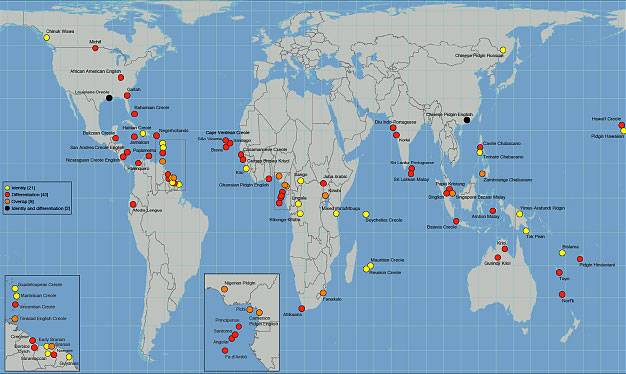
This is a very important point, as it is inappropriate to refer to all languages in the APiCS as creoles.Įach language is the responsibility of a single author or a team of authors, which were requested to fill out a questionnaire for the 130 structural features and to write a sociohistorical and grammatical survey article for their language. It is up to the readers and users of the database to make these classifications. The Atlas does not make any classification into what is and what is not a pidgin/creole/mixed language. The language set contains not only the most widely studied Atlantic and Indian Ocean creoles, but also less well known pidgins and creoles from Africa, South Asia, Southeast Asia, Melanesia and Australia, including some extinct varieties. The project covers 76 contact languages ( pidgins, creoles and mixed languages). The published physical volumes contains more information of this kind than the online version. The profile pages for the languages also includes sociohistorical information about each language. The data is presented in the form of maps and profile pages for each language. ĪPiCS gathers comparable synchronic data on the grammatical and lexical structures of a large number of pidgin and creole languages. It is part of the Cross-Linguistic Linked Data project hosted by the Max Planck Institute for the Science of Human History. The project also has a wiki page APiCS wikipage.

This makes APiCS different from other similar surveys of languages where there is typically one or a team of researchers gathering data on many languages by reading different descriptions.

The project involved 78 linguists contributing with data on languages that they are experts on.

The atlas was edited by Susanne Maria Michaelis, Philippe Maurer, Martin Haspelmath, and Magnus Huber.

It exists as a four volume publication and online database in the form of a website APiCS Online. The Atlas of Pidgin and Creole Language Structures ( APiCS) is a comparative linguistic atlas of contact languages.


 0 kommentar(er)
0 kommentar(er)
